Last updated 4 months ago | Originally Published: August 31, 2023
Discover 10 Discontinued Candy Bars Americans Want Back
Candy bars hold a special place in our hearts, often evoking fond memories of childhood or simpler times. When a favorite candy bar gets discontinued, it’s like a small piece of that nostalgia is lost forever. In the United States, candy bars are more than just a sugary treat; they’re a cultural staple that can define generations.
In this article, we’ll take a walk down memory lane to revisit 10 discontinued candy bars that left an indelible mark on American taste buds. From the Reggie! Bar to Hershey’s Kissables, we’ll explore the unique stories behind these beloved treats and why they were taken off the shelves. So sit back, relax, and prepare for a sweet journey down memory lane!
1. Milkshake Candy Bar
The Milkshake Candy Bar was a classic treat with a unique flavor. Introduced in the 1950s, this bar featured a malt-flavored nougat center covered in a layer of milk chocolate. It aimed to replicate the taste of a malted milkshake in a convenient, portable form.
What set the Milkshake Candy Bar apart was its malt-flavored nougat. Unlike other candy bars that focused on caramel or peanut butter, the Milkshake bar offered a distinct malt taste that resonated with fans of traditional milkshakes. It was a unique offering in a market dominated by more conventional flavors.
Despite its unique taste and a dedicated following, the Milkshake Candy Bar was eventually discontinued. One reason could be the changing consumer preferences that leaned towards more familiar flavors like caramel and peanut butter. Additionally, the bar faced stiff competition from other established brands, making it difficult to maintain its market presence. Its discontinuation left fans yearning for that unique malt flavor that’s hard to find in today’s candy aisles.
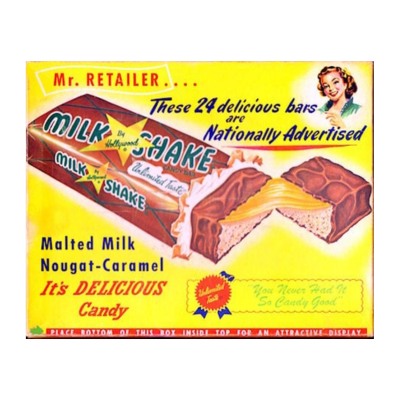
2. Coconut Grove
Introduced in 1923 by the Curtiss Candy Company of Chicago, IL, Coconut Grove was a classic candy bar that stood the test of time. It featured a creamy coconut center, perfectly complemented by a wrapping of bittersweet chocolate. This combination made it a unique offering in a market filled with milk chocolate-based treats.
Coconut Grove’s focus was on a rich, creamy coconut filling paired with bittersweet chocolate. This flavor profile departed from the more common milk chocolate and coconut combinations, giving it a unique edge. Vintage ads from as far back as 1949 showcase the bar, indicating its long-standing popularity.
Despite its storied history and dedicated fan base, Coconut Grove was eventually discontinued. The specific reasons remain unclear, but changing consumer tastes and the rise of other coconut-based candies contributed to its downfall. The loss of Coconut Grove left fans missing its unique bittersweet chocolate and creamy coconut combination, making it a nostalgic favorite to this day.
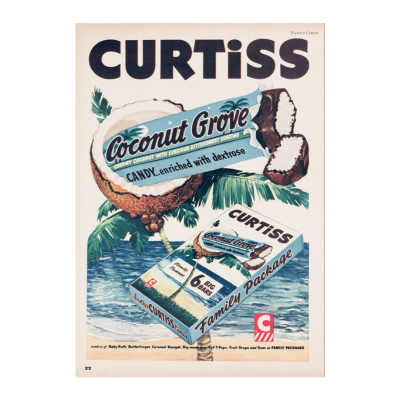
3. Summit Bar
Summit Bar was a unique entry in the candy bar market, featuring two wafers covered in a layer of peanuts and enrobed in milk chocolate. Its light, crispy texture set it apart from other, denser candy bars, making it a favorite for those who wanted a less guilt-inducing treat.
The Summit Bar enjoyed a period of success during the 1980s. Its lightness appealed to consumers looking for something different from the typical heavy, nougat-filled bars. Ads highlighting its unique texture helped it gain traction in a crowded market.
However, the Summit Bar couldn’t sustain its initial success. One of the key factors leading to its discontinuation was the changing consumer preference for healthier snack options. Additionally, the bar faced stiff competition from other established brands that dominated shelf space. As sales dwindled, the Summit Bar was eventually discontinued, leaving behind a fan base that still reminisces about this one-of-a-kind treat.
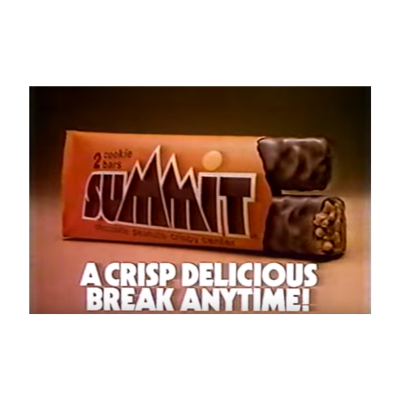
4. PowerHouse Bar
The PowerHouse Bar was a candy bar that aimed to pack a punch in flavor and nutrition. Introduced in the 1970s, it was filled with peanuts, caramel, and fudge, all wrapped in a milk chocolate coating. The bar was marketed as a high-protein, high-energy snack, making it popular among athletes and active individuals.
Nutritionally, the PowerHouse Bar was ahead of its time. It was rich in protein and offered substantial calories, aiming to provide a quick energy boost. This made it a go-to option for people who needed a filling snack on the go.
Despite its unique positioning, the PowerHouse Bar was discontinued in the 1980s. One reason was the growing awareness of healthy eating habits, which made high-calorie snacks less appealing to the general public. Furthermore, the rise of specialized energy bars and protein shakes offered competition that the PowerHouse Bar couldn’t keep up with. As a result, this once-popular bar faded into obscurity, leaving a legacy as one of the original “energy bars” before the term became popular.
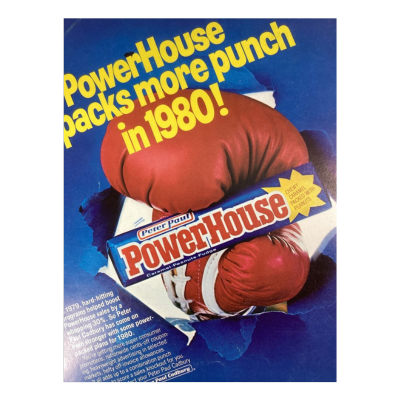
5. 7 Up Candy Bar
The 7 Up Candy Bar was an intriguing concept that had nothing to do with the popular soda. Introduced in the late 1930s, this candy bar featured seven different pockets, each filled with a different flavor like cherry, coconut, caramel, and more. It was like having seven mini candy bars all in one, offering a unique tasting experience with every bite.
One of the main selling points of the 7 Up Candy Bar was its variety. It was a hit among those who loved trying different flavors but didn’t want to buy multiple candy bars. The concept was innovative for its time, capturing the attention of consumers looking for something out of the ordinary.
Despite its initial appeal, the 7 Up Candy Bar was discontinued in the 1970s. The oil crisis led to increased production costs, making it expensive to produce a candy bar with so many different components. Additionally, the bar faced competition from simpler, easier-to-produce options that dominated the market. As a result, the 7 Up Candy Bar was eventually phased out, leaving behind a legacy as one of the most unique candy bars ever produced.
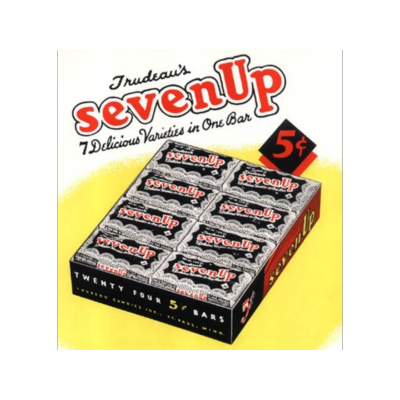
6. Hershey’s S’mores
Hershey’s S’mores aimed to capture the essence of a campfire favorite in a convenient, ready-to-eat format. Launched in the early 2000s, this candy bar featured layers of marshmallows and graham crackers covered in Hershey’s milk chocolate. It promised the s’mores experience without the need for a fire.
What set Hershey’s S’mores apart from traditional s’mores was its portability. You didn’t need to gather around a campfire to enjoy it; the candy bar was designed to offer the s’mores experience anytime, anywhere. This made it appealing to those who loved the classic treat but wanted a more convenient option.
However, Hershey’s S’mores had a relatively short lifespan. One reason for its discontinuation was that it couldn’t quite replicate the authentic taste and texture of freshly made s’mores. Additionally, it faced stiff competition from other Hershey’s products and similar-themed candy bars. As a result, Hershey’s S’mores was discontinued, leaving fans to return to the traditional method of making this beloved treat.
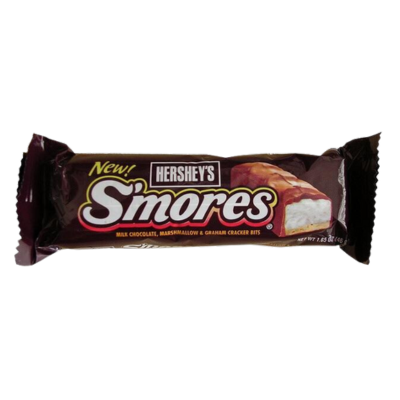
7. Butterfinger BB’s
Butterfinger BB’s was a bite-sized take on the classic Butterfinger bar. Launched in the early ’90s, these small, spherical treats were filled with the same crispy, crunchy, peanut buttery center that fans loved in the original bar, all coated in milk chocolate.
The allure of Butterfinger BBs lay in their snackable size. They were easy to pop into your mouth, making them a convenient option for on-the-go snacking. In essence, they complemented the original Butterfinger by offering a different way to enjoy the same great taste.
Despite their popularity, Butterfinger BBs were discontinued in 2006. One reason was the shift in consumer preferences towards healthier snack options. Additionally, the product faced internal competition from other variations of the Butterfinger brand. As a result, Butterfinger BBs were pulled from the shelves, much to the disappointment of their dedicated fan base.
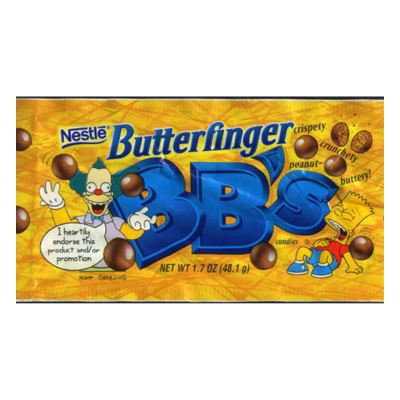
8. Oh Henry! Candy Bar
The Oh Henry! Candy Bar was a staple in the American candy landscape for nearly a century. Originally produced by the Williamson Candy Company in Chicago, this treat was a delightful mix of peanuts, caramel, and fudge, all covered in milk chocolate. Its texture was chewier than a Snickers bar, offering a unique mouthfeel that many found irresistible.
For years, Oh Henry! enjoyed a dedicated following, but sales had steadily declined for decades. In 2018, a significant change occurred when Nestlé sold the rights to the candy bar to Ferrero SpA, the parent company of Ferrara Candy Company.
Shockingly, Oh Henry! was discontinued in 2019 without any formal announcement or press release. The abrupt end left fans puzzled and disappointed. The decline in sales and the shift in ownership likely contributed to its sudden exit from the market. While the bar is still fondly remembered, its unceremonious discontinuation left many wondering what could have been if it had been given a proper farewell.
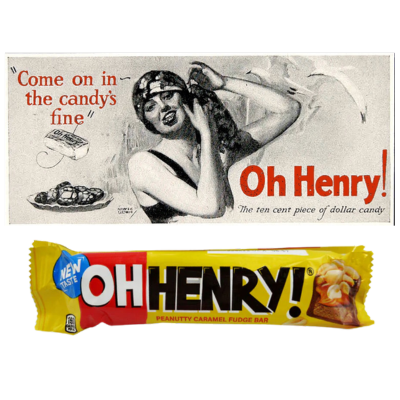
9. PB Max
PB Max was a candy bar that quickly gained a cult following after its introduction in the late ’80s. The bar featured a whole-grain cookie base, topped with creamy peanut butter and enrobed in milk chocolate. It was a peanut butter lover’s dream come true, offering a different texture and flavor profile compared to other peanut butter-based bars.
What set PB Max apart were its key ingredients. The whole-grain cookie base provided a unique crunch, while the generous layer of peanut butter satisfied even the most ardent peanut butter fans. It was a harmonious blend of textures and flavors that made it a standout in the candy aisle.
Despite its popularity, PB Max was mysteriously discontinued in the early ’90s. The reason behind its disappearance remains unclear, sparking various theories among fans. Some speculate it was due to internal company changes, while others believe it couldn’t sustain competition from other peanut butter candies. Whatever the reason, the absence of PB Max is still felt today, leaving fans to reminisce and wonder why such a beloved treat was taken off the market.
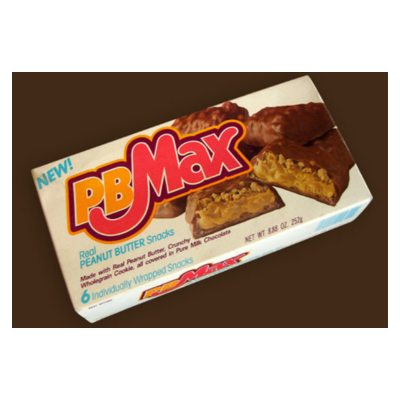
10. Hershey’s Kissables
Though not a traditional candy bar, Hershey’s Kissables holds a special place in the hearts of many. Introduced in 2005, these were miniature, candy-coated versions of the iconic Hershey’s Kisses. They were colorful, fun, and designed to be a shareable treat that could be enjoyed in small doses.
The marketing strategy for Hershey’s Kissables was focused on their snackable nature. Packaged in resealable bags, they were promoted as a convenient, on-the-go option for those who wanted just a small taste of chocolate. The colorful coating also made them popular for decorating baked goods or as a festive addition to holiday treats.
However, Hershey’s Kissables was discontinued in 2009. One reason was a change in the formula that led to the removal of cocoa butter, which altered the taste and disappointed fans. Additionally, they faced competition from other bite-sized, candy-coated chocolates in the market. Though they may not have been traditional candy bars, the absence of Hershey’s Kissables is felt by many who enjoyed their unique twist on a classic favorite.
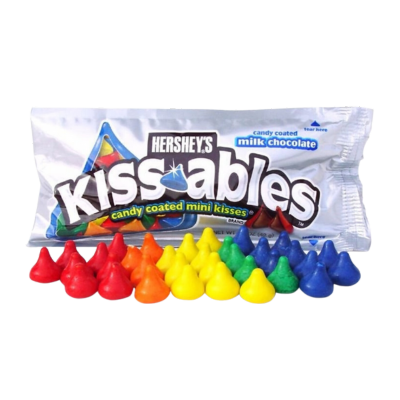
The Lasting Impact of These Discontinued Candy Bars
We’ve taken a nostalgic trip through 10 discontinued candy bars that once graced the shelves of American stores. From the athlete-inspired Reggie! Bar to the snackable Hershey’s Kissables, each of these treats had unique qualities that made them fan favorites. Their absence not only leaves a gap in the market but also in the hearts of those who grew up enjoying them.
The reason these bars are still missed today is simple: they were more than just candy. They were part of our culture, our memories, and, for some, even our daily routines. Whether it was the unique texture of PB Max or the seven-in-one experience of the 7 Up Candy Bar, these treats offered something special that hasn’t been replicated.
Do you have fond memories of any of these discontinued bars? We’d love to hear your stories! Share your memories in the comments below. And if you’re interested in more trips down memory lane, consider signing up for our newsletter for updates on similar nostalgic topics.
Don’t forget that the candy world is still full of delightful options. Discover hundreds of great candy bars that are still on the market today right here at Candy Retailer!

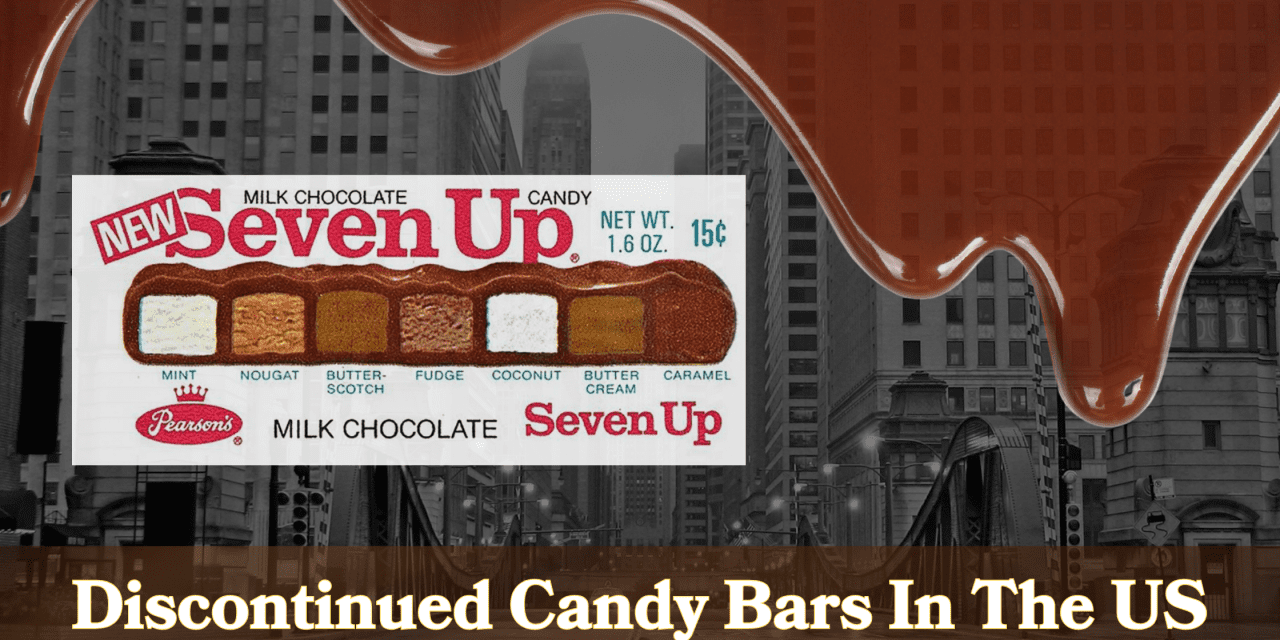
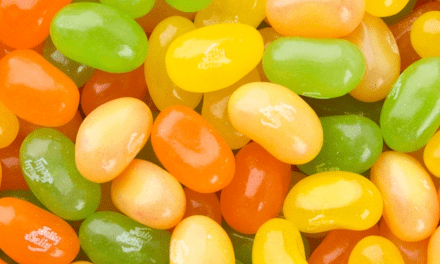

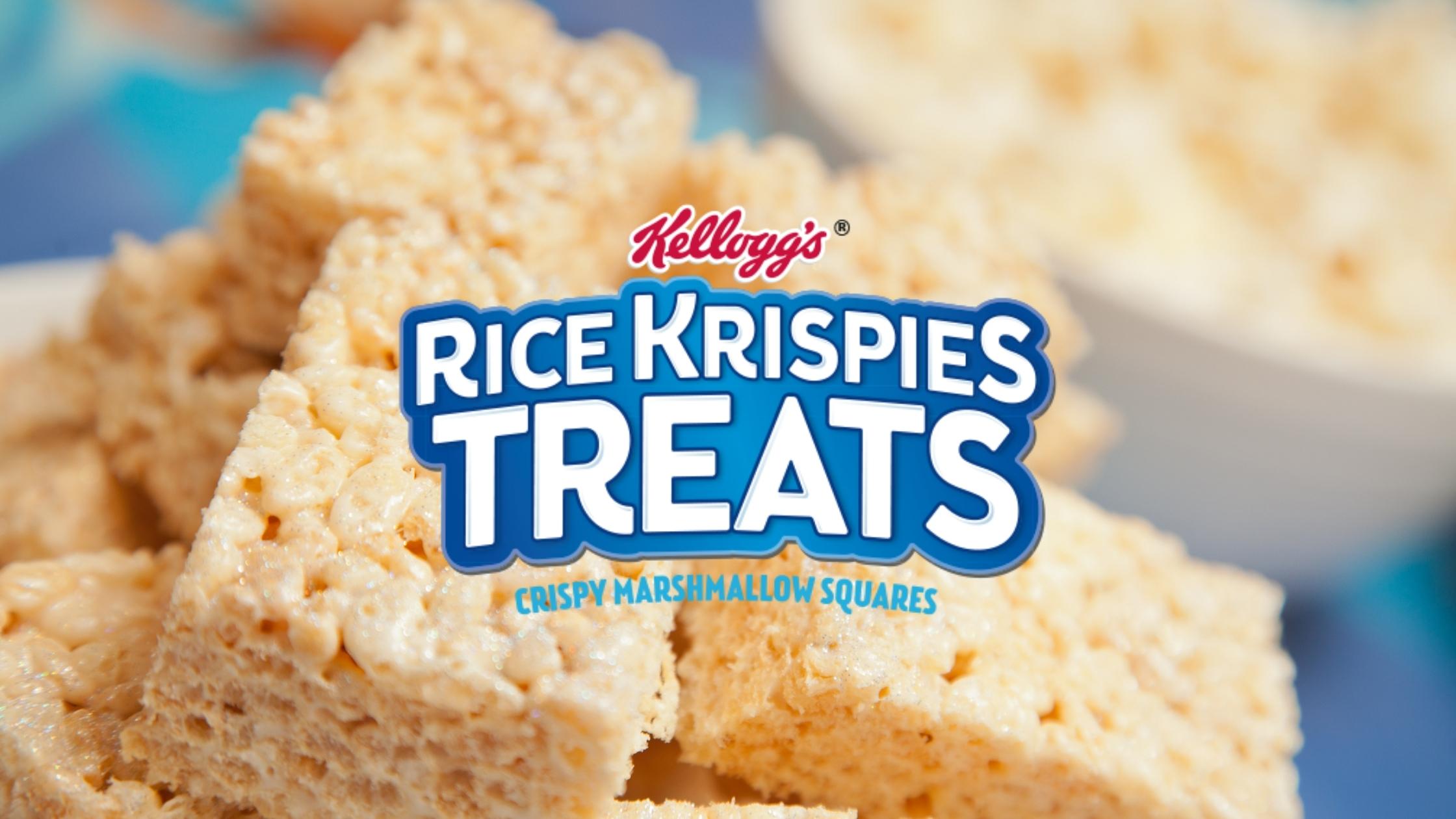
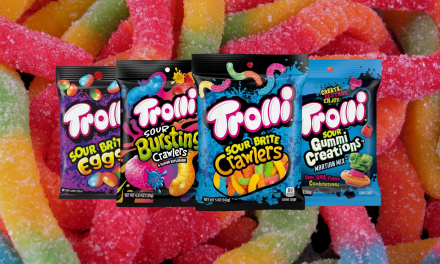
I loved 5th Avenue they were my favorite I wish I could order some.Also Butter Nut. My e-mail is dixonmamie22@gmail.com please let me know! Thanks very much
Hi Mamie, thanks for your comment! 5th Avenue candy bars are a favorite here at Candy Retailer! We have 18-count boxes (normal size) and 18-count king-size boxes. Here is where you can find them:
5th Avenue 18ct Box: https://www.candyretailer.com/ProductDetails.aspx/Candy/5th-Avenue-18ct-Box/
5th Avenue King Size 18ct Box: https://www.candyretailer.com/ProductDetails.aspx/Candy/5th-Avenue-King-Size-18ct-Box/
Wish I could get my hands on some Butternut candy bars, and some ORIGINAL yellow lemon and lime green Tootsie roll pops. Uu uuhmmm good ! No chance right?
I loved Milkshake Bars! In the summer my family belonged to a Swim Club at Crystal Lake in Connecticut. I had my first bar there and it’s one of the things I associate with swimming in that lake. Now neither the candy bar nor the Swim club exist only in my heart. My older brother was also a fan of Milkshake Candy Bars. We
I miss Powerhouse and the old Rock candy.i wish they would bring both back.
Hi Robert, thanks for the comment! We currently carry Old Fashioned Christmas Cut Rock by the pound; however, if you’re talking about rock candy, like the kind on a stick, we also carry that but out of stock right now. You can always sign up to get a notification when we stock up again, which should be soon! I attached a link to both product pages here for you. Thanks again for your time feedback, we hope to hear from you again! 🙂
Primrose Old Fashioned Christmas Cut Rock 1lb
Espeez Rock Candy On A Stick Assorted 36ct Box
I would love to find Hollywood candy bars.
One of my friends tells me that Mounds is eventually going to be discontinued because it is not as popular as other candy bars like Almond Joy and Snickers and Mars (etc).
I haven’t read anything about it yet but my friend says it is some executive decision on the part of the candy company that is not publicized and that if you go to the candy section of any store you will notice the Mounds is harder to find . I am not so sure but I did go looking for Mounds in a store and it did seem there was less of it than other candies and other candies were placed more prominently on the shelf than Mounds. Anyone notice this?